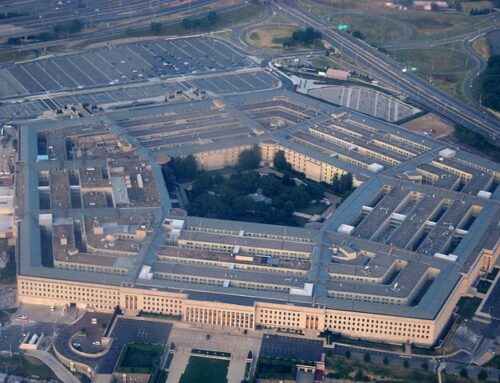Last week we told you about a congressman’s efforts to feed the already overstuffed Army modernization program called Future Combat Systems. Here’s how other shenanigans may allow FCS to pick up even more dollars as it rolls through the halls of Congress.
A major star in the galaxy of FCS weapons is the Non-Line-of-Sight Cannon (NLOS-C), a manned ground vehicle similar to the currently fielded Paladin but “networked” with other weapons by the FCS computer software. BAE Systems, which holds the contracts for both NLOS-C and the Paladin, will begin producing elements of NLOS-C by the end of 2008—five years before the Army is scheduled to put core FCS elements into production.
That’s because a couple of well-placed Congressmen from Oklahoma spotted an opportunity in FCS to bring some money to their homeland. In 2005, Representative Tom Cole (R-OK) added language to the 2006 Defense Authorization bill establishing separate program elements for NLOS-C, thereby weaning its funding and schedule from that of FCS. He also added $50 million to the administration’s $108 million request for the weapon and inserted language in the following year’s bill ensuring full funding for the NLOS-C. Cole boasted in a press release that he “was able to use his powerful position on the Rules Committee” to negotiate the changes with House Armed Services Committee Chair Duncan Hunter (R-CA).
The Oklahoma delegation had targeted Elgin, a tiny town in the state’s southwestern corner, as a potential location for NLOS-C assembly because of its proximity to Fort Sill, where the U.S. Army’s field artillery testing operations are located. BAE systems announced last year it would move production of the NLOS-C from Minnesota to a 150,000 foot facility it will build in Elgin. The Elgin facility will be located in an industrial park currently being developed with the help of $2.2 million dollars authorized in 2004 by the Senate Environment and Public Works Committee, then chaired by Sen. Jim Inhofe (R-OK). The city is reportedly pursuing a Tax Increment Financing district to raise further funds.
Using bloated defense projects as hometown employment programs is unfortunately not newsworthy these days. But there is an added danger that the NLOS-C could prolong the convalescence of the sickly FCS program. The FCS computer network (along with many other FCS components) isn’t ready, so the cannons can’t be fully tested. That means the cannons “will not be deployable without significant modifications” that could cost time and money, according to a recent Government Accountability Office report . The GAO also worries that the rush on the NLOS-C could “create undue momentum for production of FCS core systems” by establishing a new industrial base for manned ground vehicles—and Congressional efforts to sustain it. One of the oldest tricks in the book.











Get Social